















© Shazam Casino, 2025. All Rights Reserved
Online slots are among the most popular games at our trusted online casino — and for good reason. They offer fun, excitement, and chances to win big. At Shazam Casino, players find a wide variety of slots to suit all tastes. From classic 3-reel games to video slots packed with slot game features and thrilling slot jackpots, the options are endless. The platform is designed to deliver smooth, enjoyable gameplay for all players. With clear slot paylines and transparent rules, everyone can join the action confidently.
Shazam Casino stands out as a premier destination for slot lovers. Here’s why:
With more than 1,300 games, Shazam Casino offers one of the largest selections of real money slot machines online. This massive collection includes classic, video, and progressive slots. The wide variety means every player can find games matching their preferences. Whether seeking simple gameplay or complex bonus systems, there’s something for everyone. This huge library reflects a commitment to providing the best online casino slots in one place.
Our casino partners with leading slot providers to ensure quality and fairness. Betsoft, Rival, and Dragon Gaming are just a few trusted names behind the games. These developers offer innovative designs, smooth animations, and reliable software. Thanks to them, players enjoy the latest slot themes and exciting mechanics. This partnership also guarantees the games have proven slot RTP rates and fair outcomes.
Shazam Casino values its slot community. That’s why it offers exclusive slot bonuses tailored specifically for slot enthusiasts. rom get free spins on new releases to reload offers and tournament entries, slot enthusiasts are always in for a treat. Players can benefit from welcome packages, free spins, and reload rewards. In addition, our casino runs regular slot tournaments where players compete for extra prizes. These offers help maximize fun and boost winning chances.
Don’t forget — you can claim a casino bonus upon registration to boost your bankroll right from the start!
The slot library features several categories to suit different preferences.
For fans of simplicity, classic 3-reel slots are a great choice. These games replicate the feel of old-school machines with straightforward rules. Their charm lies in easy-to-understand slot paylines and nostalgic slot themes. While they often feature lower volatility, they can deliver steady wins. The minimum and maximum bets typically suit players with varying budgets.
Video slots are packed with rich graphics and immersive soundtracks. They come with exciting slot game features like multipliers, wilds, scatters, and interactive bonus rounds. These games tend to offer medium to high slot volatility, which means bigger wins but less frequent payouts. They often have multiple slot paylines increasing winning potential. Our casino offers hundreds of video slots featuring diverse themes, from fantasy to adventure.
For those chasing massive prizes, progressive jackpot slots are the top pick. These games pool a portion of each bet into a growing jackpot. The jackpot can reach astonishing amounts, making them among the most thrilling in online gambling slots. The risk level varies, but the chance to win life-changing sums attracts many players. At Shazam Casino, players find exclusive access to the latest progressive games with high-quality gameplay.
Players looking for strategic choices can find slots with excellent slot RTP and varying slot volatility. High RTP online casino slots offer better long-term returns, ideal for cautious players. Meanwhile, high volatility slots reward risk-takers with rare but large wins. Our platform allows users to filter games by these criteria. This helps players pick the most suitable titles for their style.
Getting started is quick and easy.
Sign up using your casino member login or register a new account in minutes. The process is quick and secure, allowing instant access to the slot library. Once registered, players can manage their profiles and track gameplay history.
New players receive a warm welcome with a bonus package. This includes bonus coins and free spins to kickstart the experience. The welcome offer enhances chances to explore online slots real money options safely.
Our casino supports multiple deposit methods for convenience. Visa cards remain popular, while Bitcoin and various altcoins provide fast, anonymous payments. These fast and secure options make it easy to fund your account and play slots and table games for real money.
All games at Shazam Casino are playable instantly via browsers. There is no need to download software. This ensures smooth access across desktop and mobile devices. Players can jump into action immediately and enjoy play slots online for real money whenever they want.
Shazam offers generous rewards to players enjoying the best slots to play online for real money.
Shazam Casino offers up to 7,500 coins in bonuses spread across initial deposits. This generous package aims to boost new players’ bankrolls. Combined with free spins, it provides a strong start.
Regular promotions include free spins on popular slot titles. These spins give players extra chances to win without risking coins. It’s a favorite perk for slot lovers in our casino.
Reload bonuses keep gameplay rewarding beyond the welcome stage. Weekly deals add coins to deposits, fueling more sessions. Additionally, slot tournaments invite players to compete for leaderboard prizes and exclusive rewards. These events bring a social and competitive edge to online slots.
Playing slots on the go is seamless at Shazam.
Shazam Casino optimizes all slot games for mobile use. Whether on Android or iPhone, the experience stays seamless. Mobile players enjoy full access to the entire slot collection.
Games support smooth touchscreen controls. This makes spinning reels and activating bonuses easy and fun on smaller screens. The interface adapts naturally to various devices.
Mobile users can join progressive jackpot slots anytime. The growing jackpots and immersive features remain available on the move. This convenience ensures no missed chances for big wins.
Shazam prioritizes player safety and support.
Our casino promotes responsible gaming habits. Players can set personal limits on deposits and gameplay time. These tools help maintain healthy entertainment.
A dedicated support team is ready around the clock. Slot players can reach out via chat or email for any questions or issues. The service is friendly and efficient, ensuring smooth gaming.
Shazam Casino offers an impressive collection of over 1,300 slot titles. This includes classic 3-reel slots, feature-rich video slots, and progressive jackpot games to suit every player's preference.
Our slot games are developed by industry-leading providers including Betsoft, Rival, and Dragon Gaming. These trusted developers ensure high-quality graphics, fair gameplay, and innovative features across all titles.
New players can receive up to $7,500 in welcome bonuses spread across initial deposits. This package also includes free spins on featured slots, giving you a strong start to explore our games.
No downloads are required. All slot games at Shazam Casino are instantly playable through your web browser on both desktop and mobile devices. Simply log in and start spinning.
Shazam Casino supports multiple payment options including Visa, Mastercard, Bitcoin, Ethereum, Litecoin, and various other cryptocurrencies. Crypto deposits offer fast and anonymous transactions.
Classic 3-reel slots offer simple, nostalgic gameplay with straightforward paylines. Video slots feature advanced graphics, multiple paylines, and exciting bonus rounds including wilds, scatters, multipliers, and free spins.
Progressive slots pool a portion of each bet into a constantly growing jackpot. This jackpot continues to increase until one lucky player hits the winning combination, potentially resulting in life-changing payouts.
Yes, Shazam Casino promotes responsible gaming. Players can set personal deposit limits and gameplay time restrictions through their account settings to maintain healthy entertainment habits.
Absolutely! Shazam Casino regularly offers free spins promotions on popular and newly released slot titles. These allow you to win real money without risking your own funds.
Yes, our dedicated support team is available 24/7 via live chat and email. Whether you have questions about game rules, bonuses, or technical issues, we're here to help anytime.


